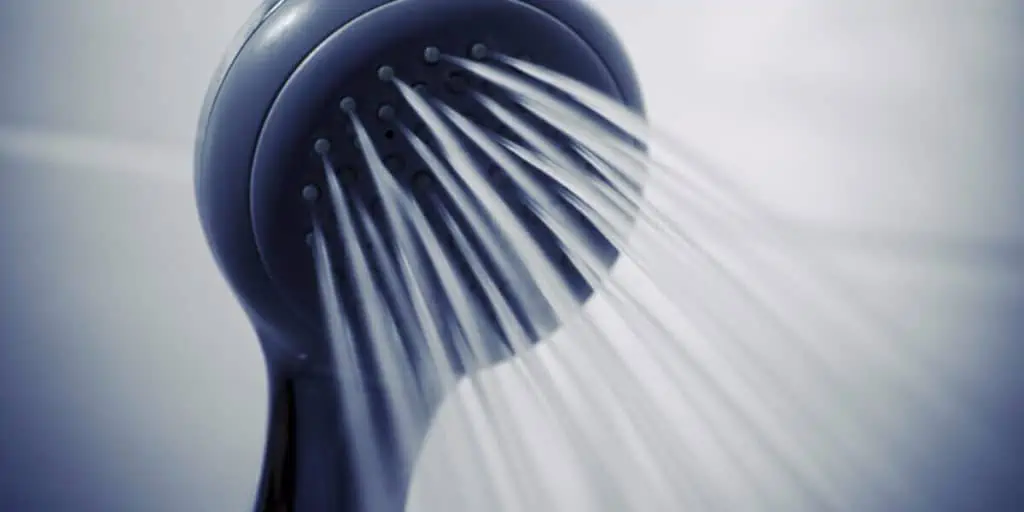Clogged shower drains. Dripping shower heads.
They’re two of the most common reasons people end up calling a plumber, but if you’re reasonably handy, there’s a good chance you can fix them yourself — we’ll show you how.
Got your workwear and toolkit? Let’s get started.
How to fix a dripping shower head
Shower head leaks typically come from two places: the shower head attachment itself or the faucet that it’s attached to.
We’ll walk you through the steps to inspect – and potentially fix – each one.
Assessing your shower head
- Start by turning off the water supply from the water main in your house.
- Remove the shower head from the water pipe and examine it for wear and tear that may be causing it to leak. If the leakage is being caused by the tiny plastic washer, remove it; if the shower head seems too damaged from within, it is best you replace it.
- Clean the shower head before you replace it. The best way to do this would be by placing the shower head into a pan of warm vinegar and nicely cleaning the debris and sediment.
- If you have replaced the plastic washer, you need to use Teflon tape to wrap threads on the pipe stem. Make sure you do not use a great deal of the tape.
- Reinstall the showerhead back to the water pipe using pliers, and make sure that it has been nicely tightened.
- Turn on the water, and turn it off after 2 minutes to examine whether the leak persists or not.
Assessing your shower faucet
- Once again, you begin by cutting off the water supply coming into the shower from the water main.
- Open the faucet and allow the water to drain out completely.
- Disassemble the faucet using a screwdriver and a wrench. You will have to unscrew all the valves and remove all the handles in order to remove the faucet.
- Examine all the different washers, particularly the packing washer and seat washer, which is made of rubber and is attached at the end of the shower stem.
- Nicely clean all the pipes by soaking them in warm white vinegar, water solution and using an old toothbrush to thoroughly scrub away any debris or sediment that you can see on the pipes.
- Reattach all the valves and knobs to reassemble the faucet.
- Re-install the faucet.
Reminder: sometimes parts need to be replaced
If you’ve followed all of the steps and checked both areas of your shower, chances are that your existing faucet is simply beyond repair and you need a new one.
We carry a selection of very competitively priced fixtures at our Vancouver location, so if you’re looking to find a bargain on high quality shower parts in the latest styles, be sure to visit us!
How to unclog your shower drain
There are a few at-home methods you can safely try to clear your shower drain without damaging your plumbing. We’ll go through them one at a time.
Method #1: Manual Removal
Start by removing the drain cover on your shower. In many cases these can be removed by hand, but you may need a screwdriver to assist you.
Look inside the drain with a flashlight and look for a visible clog or blockages that can be readily removed. Sometimes hair can accumulate and cause a blockage near the entrance to the drain.
Method #2: A Plunger
If water has collected around the drain and you are unable to see clearly through the drain pipe, you should use a plunger to try and dislodge the clog.
You may need to scoop some of the water out of the shower before you start plunging. Plunging a shower drain is often less successful than using a plunger for your sink or toilet, however, it can be beneficial nonetheless.
Method #3: Boiling Water
It’s quite possible that the clog in your shower is from old soap scum and grease. In this case, it can be a good idea to use boiling water.
The heat can melt away any debris that may be clogging the pipes or holding a clog in place, but – as always – you’ll need to be very careful when moving boiling water around your home.
Method #4: Baking Soda And Vinegar
When mixed, these two kitchen staples can be the perfect remedy for a clogged drain. You have to combine this method with the previous boiling water method. First, pour a pot of boiling hot water down your shower drain.
Pour baking soda in after the hot water. Pour a generous amount. Wait a few minutes for the mixture to settle. The baking soda will cling to anything leftover in the drain after the hot water.
After a few minutes of letting the baking soda sit, pour in several cups of the vinegar. The combination will immediately begin to bubble and ideally dislodge the blockage.
Bonus Method: Drain Snake
For deeper or especially persistent blockages, a drain snake can help. They aren’t exactly a household staple, but they are available at most hardware stores.
If you already have one, or have access to one, it can provide a quick and effective fix. For most people, though, the cost and infrequent usage mean that going out and buying a drain snake isn’t the most sensible method of fixing a clogged drain.
Stuck? Not feeling up to it?
Sometimes stubborn plumbing problems need an expert’s touch.
If you’re not comfortable working on your plumbing yourself, or if you’ve run into an issue that you just can’t fix on your own, our certified plumbing technicians are ready to help.
Give us a call or send us a message online to book your service appointment!

